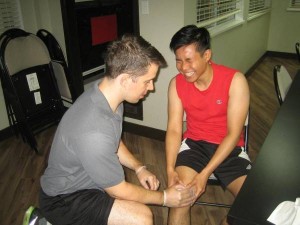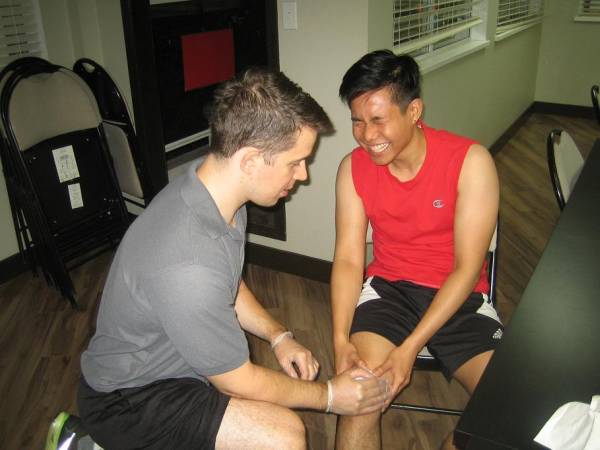Knee pain is also known to occur among those who love to dance. The knee is described as a hinge joint that endures most of the strain while dancing, running and walking. The knee straightens and bends but also has a certain degree of limited rotation and sliding. Always bear in mind that there is a complex structure of tendons, ligaments, meniscus, cartilage and bursae that comprises the knee and enable movements such as dancing, walking, running as well as squatting and jumping.
Patellofemoral syndrome
Patellofemoral syndrome is a condition affecting the knee that results to discomfort surrounding the patella due to mechanical issues. The condition can be caused by chondromalacia which involves roughening of the undersurface of the knee cap, structural abnormalities or muscle imbalance.

Those who love to dance using the poor technique are at risk for suffering from this condition. Once there is poor turnout technique, hard floor, muscle imbalance, over pronation, tight muscle groups or diminished hip external rotation, it puts the dancer at high risk for developing patellofemoral syndrome.
Plica syndrome
This condition occurs due to structural abnormality. In some cases, the fetal tissues are not completely absorbed or matured. As an outcome, there are leftovers of the tissue in the knee joint that does not belong anymore. The synovial plicas are membranes inside the knee that separate it into compartments during development.
In most individuals, they continue to exist as sleeves of tissue. In some, they are quite evident and susceptible to irritation. The doctor usually recommends rest, application of ice and anti-inflammatory medications to minimize the pain and swelling. In case rehabilitation could not prevent the condition from recurring, surgical removal of the plica might be considered.
Tendinitis
Some of the same internal and external forces that increase the risk for dancers to patellofemoral syndrome also increase the likelihood for pain due to tendinitis. The tendinitis that develops is usually the result of pain right below the kneecap or at the lower interior portion of the knee.
Iliotibial band friction syndrome
Lateral knee pain among dancers is usually triggered by this condition. The band of tissue that travels from the hip up to the knee is partly liable for stabilizing the knee. Cycling, running and dancing produces enough friction over the lateral aspect of the thigh bone to trigger inflammation that leads to pain over the knee during movement.

